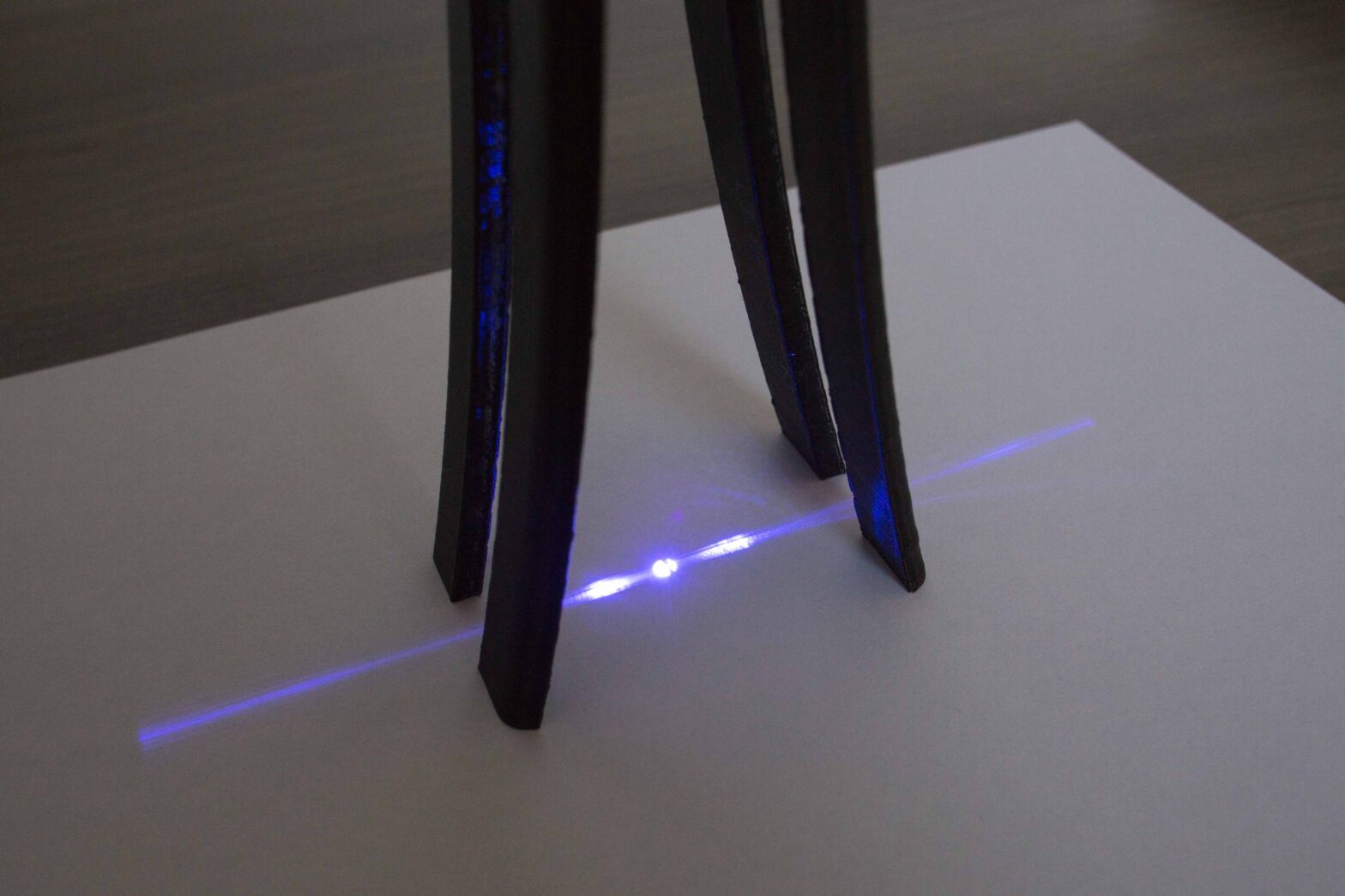In addition to the steel alloy, the grinding angle of the blade is decisive for the sharpness and service life of a knife blade. The smaller the angle, the thinner the blade can be ground and the sharper it is. However, this significantly reduces the time in which the knife is sharp. The material removal is higher, it is easier to break pieces from the blade and it becomes chipped and the fine phase bends and must be straightened again. The greater the angle, the longer the service life, greater is the robustness but significantly less is the sharpness of the blade.
The sharpening angle depends exclusively on the alloy of the steel and is selected by the manufacturer of the knife based on this. Steel with a high carbon content will have a correspondingly smaller grinding angle than a stainless steel blade. Each knife has an individually calculated angle that must be maintained.
I have constructed a measuring setup to be able to determine the grinding angle of knife blades exactly and reproducibly with the help of a laser and some mathematics.
My measuring principle
When light hits a smooth surface with low surface roughness, such as a metallic knife blade, the light beam is reflected back in a directional reflection based on the law of reflection (Fig 1).

The angle of incidence (δ) of the incident light beam is equal to the angle of reflection (δ‘) of the reflected beam. Both lie on the same plane of incidence.
\delta = \delta '
If the knife is lying on its back with the blade pointing upwards and a laser beam shines exactly perpendicular to the blade, the light beam is split. It is reflected depending on the sharpeningangle of the blade. If it is a double beveled knife edge, two reflection points will be created mirror symmetrically. With single beveled knife edges, one reflection point will be asymmetrical to the other. The width of the two projected points indicates whether the blade was ground evenly, flat, concave or convex. Ideally, only two clearly defined points should be visible.

The distance between the reflection point and the mirror axis provides information about the grinding angle of the knife. The greater the distance, the greater the angle.
To calculate the angle, we need two pieces of information. The exact distance between the reflection points (corner B in Fig 2) to the mirror axis, and the perpendicular distance (side a in Fig 2) from the reflection surface to the knife blade (side b in Fig 2). Using these two values (a and b), the side c can be calculated via the Pythagorean theorem.
c² = a² + b²
By means of the cosine rule the angle α at the reflection point R (Fig 2) between the sides c and b can be calculated.
\alpha =cos(\frac{a²-b²-c²}{-2bc} )=cos(\frac{b}{c})The actual grinding angle of the knife is equal to the angle bisector here.
Sharpening Angle = \frac{\alpha}{2}I made a small sheet in Excel to simplify the calculations. You can download it here.
My measurement setup
I have designed and 3D-printed a holder for simple kitchen knives with a small blade in order to be able to reproducibly determine the grinding angle with exact values. For this, the blade is simply clamped, the laser inserted and the reflection projected onto a sheet of paper. I use a simple and cheap violet laser with a diameter of 13.3 mm. Then, only the distance between the sheet of paper and the blade as well as projection points must be measured and entered into the formula.
I would like to thank my friend Mischa for helping me with the calculations.






